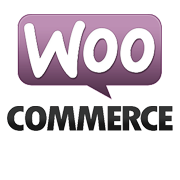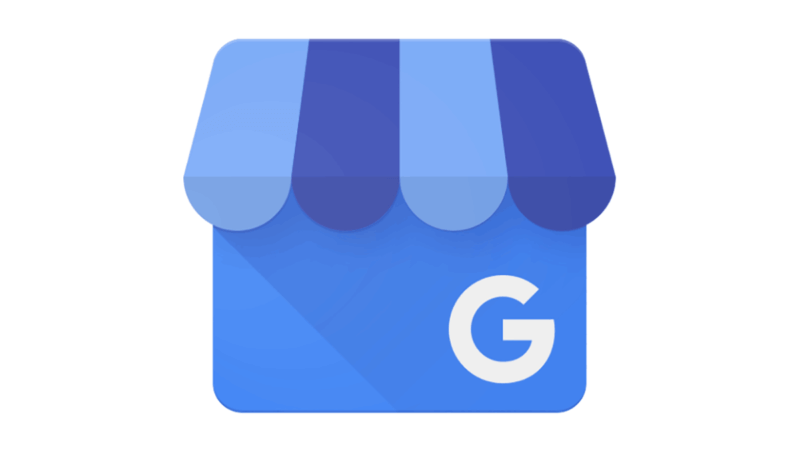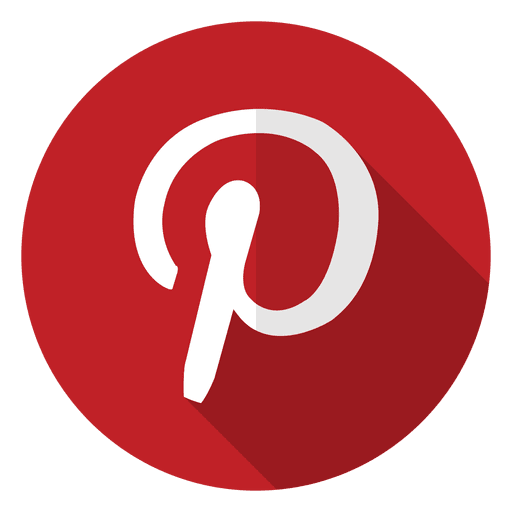How These Brothers Started A $5K/Month Custom Printing Online Service
Hello! Who are you and what business did you start?
I am Rahul Garewal, 38 years old, originally from a small town, but now living in one of India’s top metro cities and technology hub - Hyderabad for the past 15 years. I along with my brother Pushkar Garewal (36) started this company in 2017.
Our company - Printstreet is online customization and merchandising solution provider, enabling users to print their content (text, images, etc) on a wide range of products like - T-Shirts, Hoodies, Bags, etc.
Printstreet caters to both individuals and enterprises. As we don't have any minimum order quantity Individuals can order 1 T-shirt or Hoodie with their print on it, and at the same time, we also undertake bulk orders of customized corporate merchandise and gifts for enterprises.
We have been growing more than 100% year on year for the past 3 years, and are making USD 5K per month currently. And given the market conditions, this is just the beginning.

What's your backstory and how did you come up with the idea?
I came to Hyderabad like millions of others after getting a job in the city, just after completing my Engineering undergrad school. I stayed on the job for close to 8 years. At the peak of my corporate career, I was managing a country-wide franchisee network of more than 50 franchisee centers for an ed-tech company.
I was directly involved in opening most of the centers and was managing a combined revenue of more than USD 5M (INR 50 Cr). My job required me to enable franchisees to create a long-term sustainable business and I was very closely and keenly involved in it. That whole experience inspired me and changed something in me.
As I was motivating and enabling a lot of first-time business owners to start and operate their businesses, I too felt the inclination to start my own business and create something.
I came out of the job in 2015 and started experimenting with some ideas which I had at the moment. One such experiment was to develop and supply customized study material for training institutes across India. During that period I came in very close contact with the printing industry and recognized a problem, which we are trying to solve now at Printstreet.
There are 3 major pain points that Printstreet is addressing:
- Minimum Order Quantity - most suppliers ask for a minimum order quantity for customization, so if you want just one t-shirt or hoodie, or bag with your print, you must look hard.
- Products Quality - normally only generic t-shirts and bags etc. are supplied with customization by local suppliers, and if you want known trusted branded products it is highly unlikely you will get one.
- Longer turnout time - Customization takes time as the order is processed only after it is received, so most suppliers give a 2-3 weeks time frame to deliver customized orders.
Getting paying customers is the best validation in my view. So after having this hypothesis, we started cold calling companies offering our services. It was not easy, as we were new to the industry, so we did many little mistakes and learned on the job, but we were persistent.
And within 3 months of cold calling and multiple failed meetings we had our first corporate order. We continued cold calling and generated a good amount of revenue for our first year of operations. And during that time, with inputs from our target customers, we finalized our offerings and started the online store.
The cold calling and sales visits were crucial, as they helped us to understand customer needs and expectations.
Take us through the process of designing, prototyping, and manufacturing your first product.
We use WooCommerce on WordPress. It's an open source, no code CMS to build websites and is the most popular CMS in the world currently. The robust build of WooCommerce enabled us to do everything we wanted to do in a very cost-effective manner.
As an open source product, WordPress is free and has a dedicated and loyal community of users and developers making amazing themes and plugins which are offered in Freemium (in most cases). So one can build and keep the cost under control.
Now there are so many digital tools available that if used cleverly, can help one save a lot of money and time. Following is our partial tech stack:
- CMS - WordPress - free plus some premium plugins.
- Server - Digital Ocean - Got free credits for 1 year after winning a competition.
- E-mail - Zohomail - free for 5 users.
- Billing - Zoho Books - free credits for 5 years, won in an online competition.
- Payment Gateway - Razorpay & PayTM - no commission up to INR 1,00,000 per month (negotiated).
So the idea is one can find ways to reduce costs by acting smartly and playing by the rules.
The cold calling and sales visits were crucial, as they helped us to understand customer needs and expectations.
Describe the process of launching the business.
We started the company in Sep 2017 and in the initial 2 years, we were operating offline. Generating leads through cold calls and closing sales by visiting offices. The plan was to work in the real world before launching the online store. This enabled us to directly deal with customers and understand various pain points and design solutions accordingly. And it paid well in terms of learning and developing various insights regarding our business.
We launched the online store in June 2019, it was a soft launch. After making the site live we waited for about a month to start our digital marketing, as we wanted the site to sync well and all the pages to get indexed by various search engine bots and other internet tools.
We got out first order in July, before the beginning of our digital marketing campaigns, it was a hoodie and the user wanted to print a picture on it to gift it to his sister. I still remember the image!
By using WhatsApp API we configured the abandoned cart notification and it has helped us recover up to 25% of the carts, which we were losing earlier.
Things started moving in July and by Oct, we were generating close to USD 1.5 K per month in online sales.
Our biggest channel is Google ads, and it accounts for more than 60% of the traffic and sales, others are Social (FB, Insta, and LinkedIn), referrals, and organic. We can generate an average annual RoAS (Return on Ad Spend) of 13.5x in the past year and are operating with a gross profit margin of 45%.
Our business is completely funded by us, we have used our financial resources to find the business so far, not taking any loans from banks/institutions. It was tough for us to do it, and to get the job done, we (me and my bother) both cut down on our living costs drastically, moved to smaller apartments, in a low-cost neighborhood, and made many little lifestyle changes and we have been very frugal both in our personal lives and in terms of business. But we never compromised on the kind of company we want to build.
Of course, there are things that we wanted to do but could not afford, but still managed to do a lot of things that we thought could not afford, and we did it by finding ways - like finding an alternative to a particular SaaS plan which is either cheaper or comes with a Freemium plan, and other such clever tactics.
The internet is a great enabler and equalizer and is largely fair. So if you look around and ask the right questions to search engines and the right kind of people on Social media, you will get the answers and directions to find it. As they say, there is nothing like a free lunch, so you have to pay, if not by money then by your efforts, time, and sometimes goodwill and favors.
Since launch, what has worked to attract and retain customers?
Digital marketing is the lifeline for any online business (that's a no-brainer) but the real challenge is to get it right and working for you. Google ads alone are not sufficient but at the same time, it's one of the most effective and efficient channels. Following is our traffic breakdown:
- Google Ads (Search Ads, Display, Shopping Ads) - 60%
- Referrals (email, WhatsApp) - 20%
- Social - 10%
- Organic/Direct - 10%
So far Google ads had worked well for us and we have been able to generate a combined RoAS of 13x on it.
In the initial days, we were completely dependent on Google ads for traffic and orders, but as the user base increased, we started seeing the results on emails and WhatsApp. We are using WhatsApp business API, and that has helped.
Whatsapp messages have a great open rate (much higher than emails) and users also like to respond and communicate on WhatsApp, so by using WhatsApp API we configured the abandoned cart notification and it has helped us recover up to 25% of the carts, which we were loosing earlier.
At the same time, using WhatsApp one can send bulk sales and promotional messages, and offers and codes can also be customized based on user behavior. I will highly recommend it.
Email is not yet dead, and it works. So never give up on that. Customers expect to see your emails in their inbox, they may not respond to them, but the absence of it will surely backfire in terms of loss of trust. We use the standard email marketing playbook and send regular emails apart from the essential ones like order confirmation, shipping confirmation, etc.
Social channels are also very important and play a key role in brand building, you might not get a direct sale from it but keep doing it and keep building an audience, as that is an asset, and plays a very significant role in reputation building as a trusted brand. We are working on that, our Social following is nothing to boast of right now, but we are aware of its significance and trying to increase it.
Amazon does not work for us, as we let customers upload their content on the product and let me design it live on the site. And Amazon does not provide that kind of flexibility.
Repeat purchase is a strong indicator of business success and customer loyalty, and apart from product love, the biggest driver of repeat purchase is brand visibility. So we all the modes which we can right now to make us visible in the crowed screen space of the user.
How are you doing today and what does the future look like?
We are making USD 5K per month currently (annual avg for the year ending March 22) and we are profitable. Following are the key data points :
- Gross Margins - 43.5%
- Cost of Goods - 47%
- CAC - 7.5%
- RoAS - 13x
- Monthly Traffic - 20K
- Avg Session Duration - 1.14 Min
- YoY Growth - more than 100% for the past 3 years.
All our sales come from the online store. We don't have any other channel or presence elsewhere. For bulk orders, we talk to customers on the phone, and sales are closed after negotiations and approvals but their first point of contact/discovery is also the online store.
We are a small team of 8 people working on Printstreet full time, and it’s a small operation only but the future looks very promising, and seeing the growth numbers and market response, we are very excited about the prospects.
Through starting the business, have you learned anything particularly helpful or advantageous?
I come from a marketing background, so the tech was a challenge for me. Thanks to various no-code tools available now, I was able to do it all by myself. But no code tools also need some kind of basic tech skills, I had my learning curve, and after some hit and trial, I was able to figure it out.
Now I am a front-end designer (learned on the job) and can use HTML/CSS and graphic designing software (Affinity Designer) to make web pages that look cool and works too.
Starting a business is very challenging and is a test daily. Every day is a new fire to fight, every day is a new battle, you win some you lose some. Once the initial euphoria of starting on your passes out, only the truly committed and disciplined can endure this path.
My advice is to not lose faith in the process, the act of creation is messy and full of obstacles. It makes you humble, as you realize you cannot win always, and failures too are full of learnings. And another quality we developed as a team is persistence always pays off.
What platform/tools do you use for your business?
- Figma - Graphic Design and mockups
- Freepik - Free graphic resources
- Convert.to - file format conversion
- Remove.bg - remove image background
- Tawk.to - chat/customer support
- Imagify - Image optimization (WooCommerce)
- WP Rocket - WooCommerce site cache/performance enhancer
- CRM - Freshdesk - freemium plan
- Email marketing - SendinBlue
- Surveys - Google Forms
- Review - Trustpilot
- Shipping - Shiprocket
- SEO - Yoast (WooCommerce plugin)
- Pagebuilder - Elementor (WooCommerce)
What have been the most influential books, podcasts, or other resources?
The Artist's Way - Julia Cameron. Understanding the process of creation and dealing with the issues with a lack of faith in the process.
Design of Everyday Things - Don Norman. One of the best books on design and how you can use it in your business and process.
The Lean Startup - Eric Ries. A practical framework to apply directly to your business thinking and process.
Zero to One - Piter Thiel. Again a practical guide to the process of building a business
Nudge - Richard Thaler. Interesting insights on the psychology of persuasion and human behavior when given choices make a cool playbook for marketing.
The Psychology of Money - Morgan Housel. How to deal with money and/or the lack of it (mental framework).
Advice for other entrepreneurs who want to get started or are just starting out?
Having already given a lot of advice in the previous answers would like to add the following:
Trust the Process: It takes time and effort to build something meaningful, and there is a process it follows, it’s not always pleasant, but it’s the way. Keep going.
Get a Co-founder: The startup journey is very challenging and demanding, it’s always better to share the load with someone, and get a co-founder. I cannot think of doing it some other way.
Take Care of your Health: Us founders sometimes tend to overdo things, and in the process end up messing up with our mental/physical health. To face the challenges on the path, you need to be at the peak of your health (mental). So find a way that works for you - meditation, morning pages, yoga, music, family time, hiking, etc. and do it as you do your job. Because you too are your job only.
Where can we go to learn more?
If you have any questions or comments, drop a comment below!

Download the report and join our email newsletter packed with business ideas and money-making opportunities, backed by real-life case studies.

Download the report and join our email newsletter packed with business ideas and money-making opportunities, backed by real-life case studies.

Download the report and join our email newsletter packed with business ideas and money-making opportunities, backed by real-life case studies.

Download the report and join our email newsletter packed with business ideas and money-making opportunities, backed by real-life case studies.

Download the report and join our email newsletter packed with business ideas and money-making opportunities, backed by real-life case studies.

Download the report and join our email newsletter packed with business ideas and money-making opportunities, backed by real-life case studies.

Download the report and join our email newsletter packed with business ideas and money-making opportunities, backed by real-life case studies.

Download the report and join our email newsletter packed with business ideas and money-making opportunities, backed by real-life case studies.































